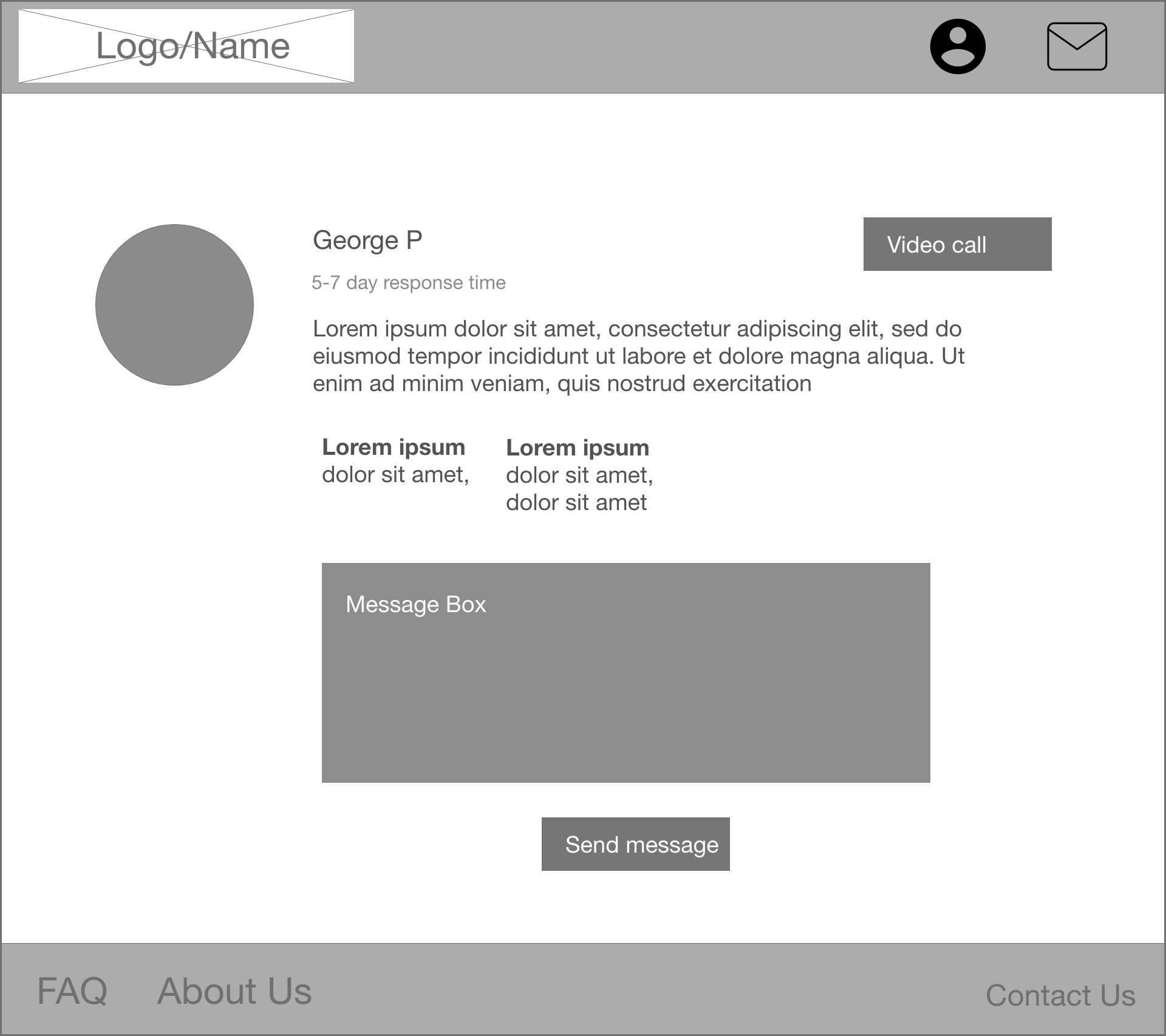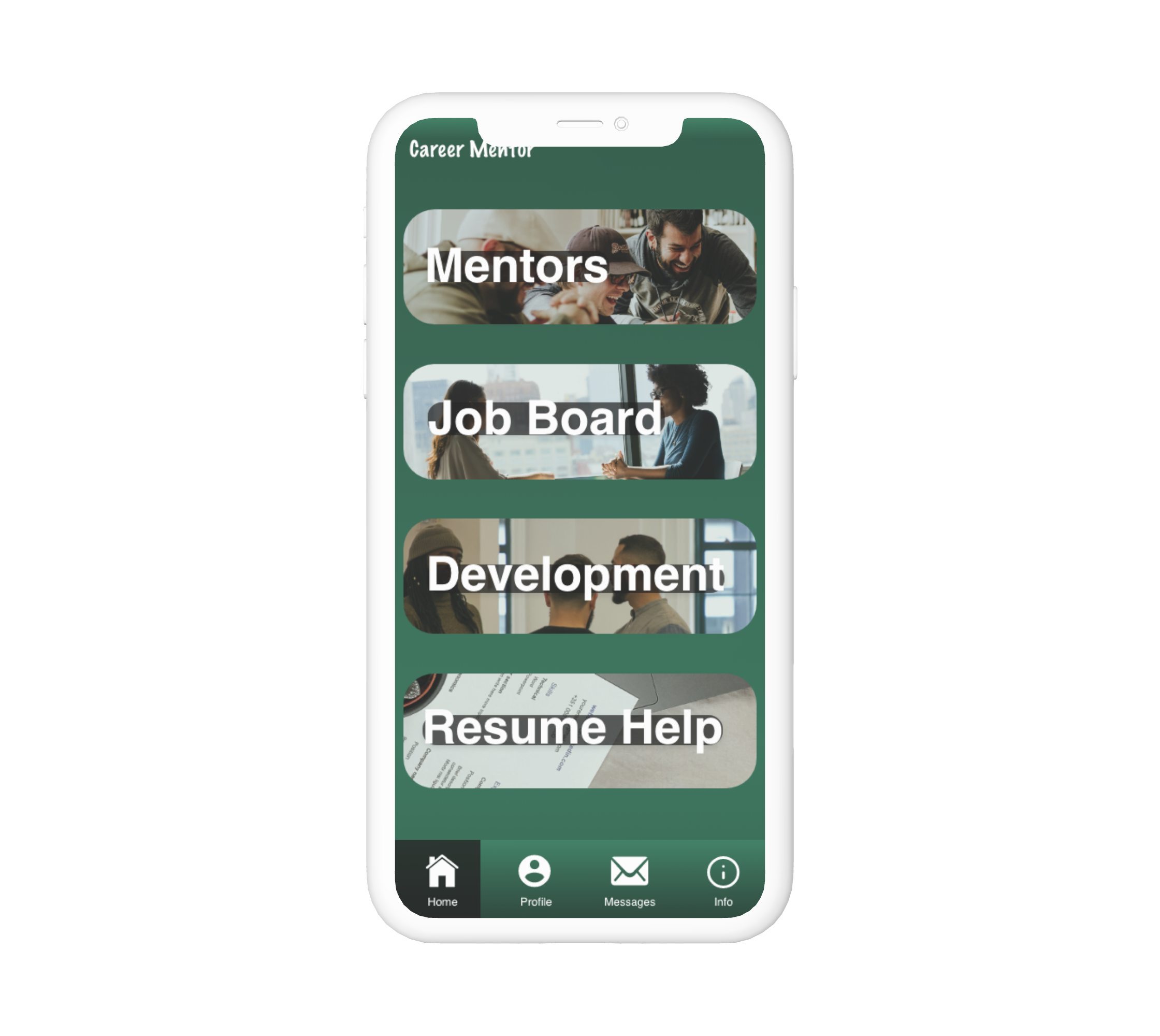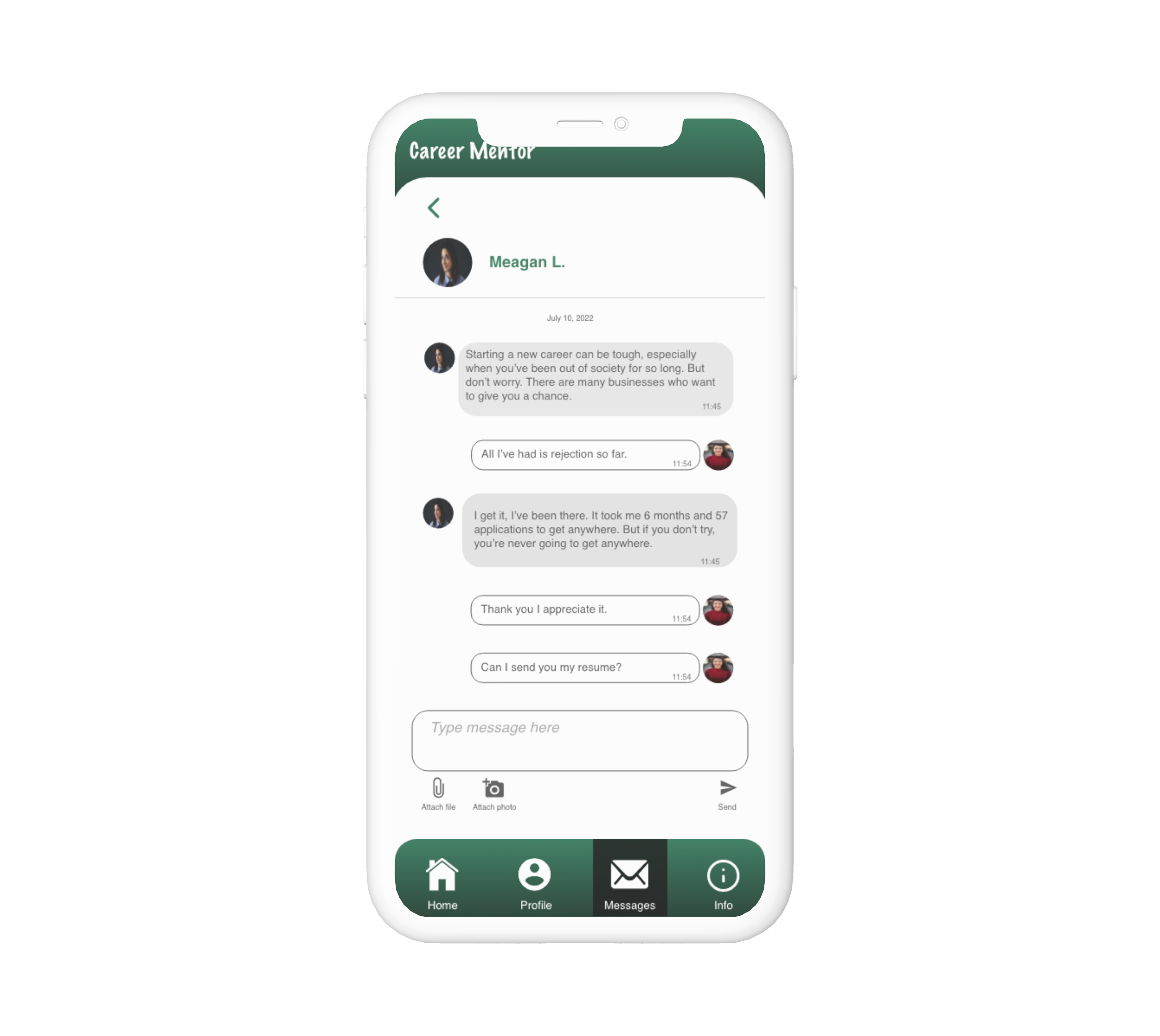Career Mentor
New opportunities for the formerly incarcerated.
Google Course Case Study
For my final project in the Google UX Design Certificate course, I was tasked with creating a project for social good. I was most excited about this project, as it taps into my background in human rights. For this project, I used Adobe XD for wireframing, design, and prototyping. For ideating, I used FigJam.
Using a project idea generator, I browsed through some ideas until I came across “create a platform for career mentoring for formerly incarcerated people.” This one really spoke to me, as I firmly believe that with support, resources, and opportunity, people are able to turn their lives around.
Role
UX designer, UX researcher
Team
Self-lead
Timeline
June-August 2022
My target audience is a very niche population. Ideally, I would like to have done in-person interviews. My research included:
YouTube videos
Dissertations
Other published first-hand accounts
Research Findings:
Formerly incarcerated people looking to re-enter the job market lack skills and education.
Target users want to feel accepted and understood
Target users’ comfort with technology ranges from novice to expert
Key Features
Mentorship
Development
Job opportunities
Resume advice
I didn’t want to turn my project into a platform for learning, so I chose to keep it simple and have the development, resume help, and job board be secondary resources on the site, comprised of articles and videos to guide the user. Keeping the concept of the next billion users at the forefront of my mind, I incorporated structures and elements that are found on globally popular social media sites.
To represent the new beginnings Career Mentor offers, I chose green as the brand color. To add dimension to buttons and backgrounds, I used a gradient. Originally, I had black as my secondary color. I felt the black was too harsh and wasn’t giving the right mood, so I softened it to a dark grey.
In my first Google UX Design project, I tried to incorporate too many colors at once. This resulted in a chaotic look, and not in a good way.
For Career Mentor, I initially started out with multiple shades of green. It wasn’t giving off the right look, so I chose instead to keep the darker shade of green, to evoke professionalism, and incorporate a dark green gradient.
Research + Ideation
Lo-Fi Designs







User Testing
As mentioned, I wasn’t able to connect with my target user to get feedback on my lo-fi designs. However, thanks to a small group of dear people, I was able to get some feedback on my designs. My participants varied in age, levels of comfort with technology, education, and background. This way, I was able to get as close to my target user, albeit missing one key characteristic.
User Testing and Research Methods
Usability testing, in-person and online using Adobe XD prototypes
User interviews
Key Takeaways:
Overall, app is straightforward, simple
2 out of 5 users had confusion with icons
80% of users preferred the mobile over desktop version
High-Fi Designs
Key Changes
Switched from desktop-first to mobile-first design. Since 80% of users in my findings preferred the mobile version of Career Mentor, and between 50-60% of overall user traffic comes from mobile devices, moving to a mobile-first approach was a logical decision, ensuring increased user access now, and in the future.
Added descriptive text to every icon, for increased usability and bridging gaps in technology comprehension.
Changed Skills and Background from statics list to dynamic tags.






Prototype
Go ahead, click on it!
Out of the 3 projects I did for the Google UX Design course, this is the one I am most proud of. I see a huge transformation in my design capabilities from the first to the final project. While the course does provide some basic Adobe XD tutorials, the majority of how I learned to use it was self-taught.
The biggest change I would want to make to this project is through user research and testing. In a perfect world, I would be able to reach out to formerly incarcerated people and learn what kinds of features they are looking for in a career mentorship program, and get a sense of comfortability with tech. I did assume a fair amount in this project. It’s not how I would ideally work through a design project.
My next step in this project, aside from improving user research and testing, would be to find a non-profit that focuses on post-incarceration rehabilitation and job mentorship, present my project, and collaborate to bring Career Mentor to life!









